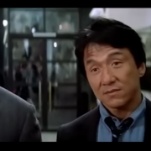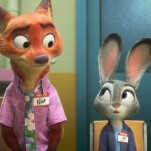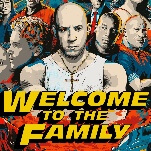Recent chatter about the latest season of Mad Men has focused less on series-long stalwarts such as Don Draper and Peggy Olson and more on a relative newcomer: Bob Benson. Played by James Wolk, Bob was intriguing specifically because we knew almost next to nothing about him for the majority of the season, even though he was seemingly omnipresent. Although he wasn’t a central character driving the action, his simple presence created an aura of uncertainty that has driven both critics and fans increasingly mad with curiosity. Late-season episodes appeared to answer some questions about his identity, but Mad Men still left plenty about him up for debate. What makes the investigation into Bob’s biography so fascinating is what makes so many television mysteries so potent: the investigation itself can be as important as the ultimate answer provided by the show.
To be certain, this isn’t an either/or proposition. By and large, especially in the world of procedurals, getting to a specific, singularly correct outcome before those on the show do can be a pleasure unto itself. Even on shows that ask either explicit or implicit open-ended inquiries, there are still certain mysteries for which there is one and only one possible answer. These drive the plot of the show, giving the characters something to uncover before the end of an episode, season, or even series. Answers to these types of mysteries provide catharsis for those inside the world of the show as well as those watching at home.
But what about mysteries that don’t resolve so easily? What about those questions that either have no good answer, or a myriad of equally applicable answers depending on the vantage point of the person attempting to provide a solution? The identity of Bob Benson seemed at first like a straightforward mystery. Depending on whom you asked over the course of this latest season, he was either a corporate spy, an undercover government employee, a closeted gay man, a serial killer, a time-traveler, or the collective id of Sterling Cooper And Partners who arrived fully formed due to the subliminal psychic powers of those within its walls. No matter which identity you thought was most likely, there seemed to only be one correct answer. We simply didn’t know it because Mad Men hadn’t told us yet.
But it was never that simple. If Mad Men has taught us anything, it’s that identity is simultaneously malleable and unknowable. Recent episodes heavily hinted that Bob Benson was gay, but that supposed answer is still rife with ambiguity and does not necessarily yield any greater insight into what makes Bob tick. Sexual identity potentially has something to do with Bob’s dual nature, but is still one piece of a much larger puzzle. Bob Benson appears to be whatever he needs to be in a particular situation in order to maintain or advance his station. His true origins, his previous cons, and his relationship with Manolo still suggest worlds of tantalizing possibilities, worlds that Mad Men may never fully flesh out. Then again, what interests creator Matthew Weiner isn’t filling in the spaces but leaving room for exploration.
As Mad Men marches toward its planned seventh-year end, it increasingly seems as if Weiner is taking a page out of the playbook of The Sopranos, where he spent two years in the writer’s room with David Chase. In that show’s sixth season, the two collaborated on the script for “Kennedy And Heidi,” which famously ends with a peyote-fueled Tony Soprano bellowing, “I get it!” into the sunrise-soaked Grand Canyon. It’s a scene that has all the trappings of epiphany, but the audience never learns precisely what Tony “gets,” and it’s unclear by the end of the series if that insight changed a single thing about how he conducted his life.
Exactly what Tony Soprano did or did not get during that sunrise is precisely the type of mystery that television can do so well. Before we learned more details about Bob, the possibilities baked into his identity opened up vastly different, yet equally interesting, lines of inquiry about thematic applicability. Discussions that started with his identity often morphed into larger discussions about what Mad Men might be saying on a grander scale. The legal and economic status of Sterling Cooper And Partners suddenly snapped into focus once people argued he was a corporate/government mole. Many of the “Megan Draper is Sharon Tate” theories fashioned Bob into the physical embodiment of the simmering tensions that rose to the surface through the year.
Trying to figure out the singular mystery of Bob’s identity doesn’t represent the “wrong” way to watch Mad Men. Bob wasn’t a spy, nor was he a mass murderer. But incorrect theories such as these still have value. By simply providing a context for such a myriad of possible theories to even exist in the first place, shows like Mad Men do a tremendous amount of good by creating room for these conversations to occur at all. These conversations need not be centered around “whodunit” or “whoisit,” but can simply exist to provide pleasure to those that seek to explore options offered up by the show. Being “right” in this case isn’t the point. Being enriched is.
Mad Men is far from the first show to provide this type of analytical space, and will be far from the last. Plenty of fans who spent six years analyzing every novel, record, painting, equation, and other Easter eggs put in-frame on Lost cried foul when the show’s ultimate resolution had almost nothing to do with any of those items. But others relished the chance to simply have the chance to discuss major works by Charles Dickens or minor works by The Mamas And The Papas. For some, these Easter eggs represented the key to solving the show. For others, they represented a way to gain understanding about the world outside of it. Both investigations have value. But the former pertains to the show in particular, while the latter involves the world as a whole. Both pursuits can exist side-by-side, and in the great shows, they almost always co-habit the space.
Some shows, by contrast, are almost exclusively about the questions, with answers being beside the point. FX’s Wilfred is perhaps the best contemporary example of this type of show. The titular character (Jason Gann) appears as a dog to everyone but Ryan (Elijah Wood), to whom he appears as a man in a dog suit. The true nature of Wilfred’s existence is the central hook of the show, and a mystery that this show will almost never answer. Why? Because that mystery defines the show’s reason to exist. The constant interrogation into Wilfred’s true nature is the precise point of Wilfred. It can’t be solved because it’s inherently unsolvable. Ryan’s relationship to Wilfred stands in for man’s philosophical inquiry into existence itself. There is no one clean-cut solution that automatically excludes the others. Solving this mystery isn’t the primary point. Simply engaging with it is.
Mad Men presented Bob Benson as an empty slate in order to draw in its audience, begging it to fill in the blanks. Was all the time and energy spent on concocting romantic/insidious/ludicrous theories about him for naught? Of course not. They were valuable as intellectual exercises, cultural anthropology, critical studies, and pure pleasure. Getting the answer right can be fun, but simply thinking of the question can ultimately be more rewarding. An answer tells you something about the show. But a question can reveal quite a lot about the world outside of it. We may not ultimately learn more about Bob Benson, but shows such as Mad Men, Lost, and Wilfred offer up a chance to know ourselves a little better.







































